Koi are pond fish at heart, but many keep juveniles in large aquariums while they grow. It can work well with strong filtration, steady water quality, and a plan to move them later. Young koi grow fast, eat plenty, and make heavy waste, so small tanks and weak filters cause trouble.
This guide walks you through the setup, water care, feeding, health checks, tank mates, and your long term plan. You will learn how to take care koi fish in aquarium without guesswork, and how to keep their colors bright and stress low.
How to take care koi fish in aquarium: setup and basics
Start with space, a robust filter, and lots of oxygen. Koi are active swimmers and messy eaters, so the tank should favor easy cleaning and stable water. Focus on width and length rather than height. Long tanks give koi room to cruise and turn.
Use a canister filter or sump that holds plenty of media. Add an air pump with large air stones to keep oxygen high. Strong flow helps move waste toward the filter intake. Return water across the surface for a rolling ripple that drives gas exchange.
Keep decor simple and safe. Bare bottom tanks are easiest to vacuum, but smooth river stones also work. Skip sharp rock and jagged wood. Koi root and nudge everything, so choose rounded pieces and leave open space for swimming. If you use plants, put them in pots or baskets, or choose floating plants. Expect some nibbling.
Aim for stable indoor temperatures and soft lighting on a timer. Avoid direct sun that fuels algae. A tight lid is a must, since koi can jump when startled. Cover any gaps around hoses and cords.
Finish with a plan to move growing koi to a pond within months. Koi can outgrow indoor setups in a hurry. Size, filtration, and good habits are your safety net until then.
Mini checklist:
- Big, long tank with a tight lid
- Canister or sump filter with prefilter sponges
- Strong aeration and surface ripple
- Bare bottom or smooth stones, safe decor only
- Timer for lights, no direct sun
- Plan for a pond upgrade
Choose the right tank size and safe stocking
Aquariums suit young koi under 8 to 10 inches. For 1 to 2 small koi, use 125 to 180 gallons. Add about 75 gallons for each extra fish. Longer tanks beat tall tanks for swimming room and oxygen exchange.
Fit a snug lid and close off cable holes. Koi jump when spooked. As they grow, plan to move them to a pond. A small group will reach 10 to 12 inches in 6 to 12 months with good care.
Filtration, aeration, and flow that keep koi healthy
Pick a large canister filter or a sump with space for bio media. Add prefilter sponges to catch big debris. This keeps the main media clean and the cycle stable. Use a powerful air pump with big air stones to raise oxygen.
Aim for total water movement of 8 to 10 times the tank volume per hour. Place filter returns so they push debris toward the intake, not across it. If your area has outages, keep a battery backup air pump ready.
Safe substrate, decor, and plants koi will not destroy
Bare bottom tanks make cleaning fast. If you prefer substrate, use smooth river stones that are larger than a marble. Avoid small gravel, they can swallow it while rooting. Skip sharp edges, rough lava rock, and spiky decor.
Choose rounded driftwood and broad rocks, then leave open space. Pot hardy plants, such as Anubias or Java fern, or use floating plants like water lettuce. Expect nibbling and rearranging. Think of plants as enrichment, not ornaments that stay put.
Temperature, pH, and lighting for indoor koi
Keep water between 65 and 75°F. Stability matters more than a specific number. Use a heater only if your room runs cold. If the room runs hot, use fans or a chiller to prevent overheating.
Target pH from 7.2 to 8.2, KH 5 to 10 dKH, and GH 8 to 12 dGH. Run lights on a timer for 8 to 10 hours each day. Keep the tank out of direct sun to limit algae growth.
Keep water clean and stable so koi thrive
Water quality drives koi health more than any other factor. Test weekly, log results, and make steady adjustments. Before adding fish, cycle the aquarium with bacteria and ammonia so the filter can process waste.
Change water every week and vacuum debris from the bottom. Rinse filter sponges in tank water to avoid killing bacteria. Consider upgrades, such as a UV sterilizer and extra ceramic media, since koi produce heavy waste.
If your tests drift, fix the cause. High ammonia or nitrite means the cycle is not ready or has stalled. High nitrate means too much waste, too much food, or not enough water change. Track values to spot trends early.
Water parameters to test weekly and safe ranges
Use a liquid test kit for accurate results. Record your numbers in a notebook or app.
- Ammonia: 0 ppm
- Nitrite: 0 ppm
- Nitrate: under 40 ppm
- pH: stable within your target range
- Chlorine: 0
- Oxygen: high, shown by strong surface ripple and active fish
Cycle the aquarium before adding koi
Do a fishless cycle for 3 to 6 weeks. Add bottled bacteria and pure ammonia to reach about 2 ppm. Wait until both ammonia and nitrite drop to 0 in 24 hours after dosing. That shows the filter can handle fish waste.
Seed the filter with used media from a healthy tank if possible. Stay patient. Rushing koi into an uncycled tank leads to burned gills and infections.
Water changes, dechlorinator, and filter care schedule
Change 20 to 30 percent of the water each week. Vacuum waste from the bottom as you drain. Treat tap water with a dechlorinator that handles both chlorine and chloramine. Match new water within 2°F of the tank to prevent stress.
Rinse filter sponges and pads in old tank water. Do not clean bio media under the tap. Never replace all media at once. Keep a regular schedule for prefilters, since they clog first.
Extra tools for clear water and a stable cycle
Use a UV sterilizer to fight green water algae and water cloudiness. Add extra ceramic bio media to boost bacteria surface area. Place a prefilter on the intake to trap large debris and make cleaning quick. Reduce direct light and feeding when algae or cloudy water appears.
Feed koi the right way in an indoor tank
Feeding koi indoors is simple when you focus on quality, portions, and timing. Use a high grade staple pellet, add fresh variety, and match the meal plan to temperature. Small, frequent meals and a weekly break day keep waste down and color up.
When koi eat well, they grow fast and stay active. When they eat too much, water quality slides. Your test kit will tell you which path you are on.
Best foods and a simple meal plan by temperature
Use a high quality koi pellet with 30 to 38 percent protein for growth. In cooler water, switch to wheat germ based formulas that are easier to digest. Rotate in fresh items for enrichment and balance.
Good add-ons:
- Shelled peas and blanched lettuce
- Orange slices for vitamin C
- Shrimp or krill for protein
- Spirulina based treats for color
Skip bread, fatty meats, and salty snacks. These add waste without benefit.
Temperature guide:
- 65 to 75°F: feed 2 to 3 small meals per day
- 60 to 65°F: feed once or twice per day, smaller portions
- Under 60°F: feed lightly or pause feeding, watch activity
How much to feed and how to avoid overfeeding
Feed what they eat within 3 minutes. Remove leftovers right away. Offer 2 to 3 small meals daily rather than one large meal. Add one no food day each week to protect water quality.
If nitrate climbs toward 40 ppm, cut portions or add another water change. Warmer water speeds digestion, so koi may handle more food in summer. Cooler water slows them down. Let their behavior guide you.
Enrichment, handling, and low stress care
Give koi room to swim, a steady current, and quiet time. Floating feeding rings help keep food in one place and teach koi where to eat. This reduces food in the filter and makes cleanup easy.
Handle koi only when needed. If you must move one, wet your hands first to protect the slime coat. Use a soft koi sock net and keep time in air very short.
Signs of healthy koi and early warning signs
Healthy koi show a steady appetite, smooth swimming, and bright color. Eyes should be clear, fins full, and gill movement calm. They respond to you at feeding time.
Warning signs:
- Gasping at the surface
- Clamped fins
- Flashing or rubbing on objects
- White spots
- Red streaks or ulcers
- Frayed fins
- Sitting on the bottom
When you see a problem, test water first. Most issues start with ammonia, nitrite, pH swings, or low oxygen.
Health, tank mates, and your long term plan
Keep new problems out, fix small issues fast, and think ahead. Quarantine new fish before adding them to your main tank. Choose tank mates that match size and temperature. Track growth and set a date for the move to a pond.
Indoor koi care is a bridge to outdoor space. Use this time to build strong habits and learn your fish.
Quarantine and common koi health problems
Quarantine new fish for 3 to 4 weeks in a separate tank with a cycled filter. Watch for ich, which looks like salt grains. Look for flashing that points to gill or skin flukes. Check for fin rot, ulcers, and cottony fungus.
Support mild cases with extra air, stable heat, clean water, and 0.1 percent salt if safe for tank mates. Seek a fish vet for deep ulcers, heavy parasite loads, or any case that does not improve in 48 to 72 hours.
Safe tank mates and what to avoid
Good choices are similar sized single tail goldfish, a weather loach in cool water, or koi only. Use caution with plecos. Some rasp slime coats on slow or sleeping fish.
Avoid fin nippers, cichlids, small tetras, or fish that need warm tropical water. Do not mix with tiny fish that can be swallowed. Size matters more than anything with koi.
Quick fixes for cloudy water, algae, and bad smells
Cloudy water often means bacteria bloom or stirred up debris. Cut feeding, check the cycle, and clean prefilters. Add an extra water change.
Green water comes from algae. Reduce light time, add a UV sterilizer, and step up water changes. Cover the tank during peak sun hours if a nearby window hits the glass.
Bad smells signal trapped waste or leftover food. Vacuum the bottom, pull out uneaten food, refresh carbon if you use it, and boost aeration.
When to move koi from aquarium to a pond
Move koi once they reach 10 to 12 inches, or within 6 to 12 months, whichever comes first. A pond of 1,000 gallons or more suits a small group. Plan strong filtration, shade, and air. Check local climate and stocking rules.
If you cannot build a pond, rehome through a trusted club or koi group. Never release fish outdoors.
Conclusion
Koi can thrive indoors for a season with good habits and gear. Keep a quick checklist: test water weekly, change 20 to 30 percent, clean the prefilter, feed small meals, watch behavior, log results, and plan the pond upgrade. Strong water quality drives bright color and steady growth.
If you apply what you learned, you will know how to take care koi fish in aquarium with confidence. Ready to set up, test, and feed smarter this week? Share your questions or wins, and start that pond plan today.
Related post: Do Cats Get Heart Worms?
Koi Care in Home Aquariums: FAQ
Can koi live in an indoor aquarium long term?
They can, but only in very large tanks. Plan 250 to 300 gallons for the first koi, then 100 gallons for each added fish. Most hobbyists move them to a pond as they grow.
How big do koi get, and how fast?
Standard koi reach 24 to 36 inches, often within 3 to 5 years. Growth depends on space, diet, and water quality. Small tanks stunt growth and raise health risks.
What tank size should I start with?
For juveniles under 6 inches, start at 125 to 180 gallons. Expect to upgrade within a year. If you cannot upgrade, choose goldfish or smaller carp varieties.
What filtration do koi need in a tank?
Use oversized filtration. Aim for a filter rated for double the tank volume, plus strong mechanical media for waste. Add plenty of biological media, like ceramic or sintered glass.
How much water flow is right?
Turn the tank volume 6 to 10 times per hour. Koi like strong, steady flow with good surface ripple for oxygen.
What water parameters are best?
Target 68 to 75°F, pH 7.0 to 8.0, and total ammonia and nitrite at 0 ppm. Keep nitrate under 40 ppm, under 20 is better. Stable beats perfect.
Do I need to cycle the aquarium first?
Yes, always. Seed the filter with bacteria or media from a healthy system. Feed the cycle with pure ammonia or fish food, then add koi only when ammonia and nitrite read 0.
How often should I do water changes?
Change 30 to 50 percent weekly in stocked tanks. Increase changes if nitrate climbs or water looks cloudy. Match temperature and dechlorinate tap water.
What should I feed koi indoors?
Offer a high-quality pellet made for koi or goldfish. Add frozen bloodworms, shrimp, peas, and blanched greens. Feed small amounts two to three times daily, only what they eat in 2 minutes.
How do I avoid overfeeding?
Test ammonia and nitrate often, watch for leftover food, and check bellies. If waste rises or water smells, cut back. Skip a day once a week to reset digestion.
Can koi live with other fish?
Yes, with large, peaceful species that handle cooler water, like big goldfish. Avoid small fish, they may get eaten. Skip fin nippers and tropical fish that need warm water.
Do koi need a heater?
Not always. Room temperature often works. Use a heater if your home drops below 60°F, or to hold a steady 68 to 72°F in winter. Avoid big temperature swings.
What about substrate and decor?
Use bare bottom or smooth river stones. Sharp gravel can harm barbels. Add sturdy driftwood and rounded rock piles for breaks in flow.
Are live plants an option with koi?
Tough, fast-growing plants can work, like Anubias on wood or pothos with roots in the water. Koi uproot soft plants, so protect roots in pots or use plant guards.
How do I keep oxygen high?
Strong surface agitation, clean filters, and no clogged media. Add an air pump with large stones. Warm water holds less oxygen, so increase aeration in summer.
What signs of stress or disease should I watch for?
Look for clamped fins, flashing, gasping at the surface, frayed fins, ulcers, white spots, or stringy poop. Test water first, then treat based on a clear diagnosis.
Should I use salt in a koi aquarium?
Use salt only for a proven reason. Low-dose salt can help with nitrite or minor stress, but it harms some plants and invertebrates. Measure carefully with a meter.
How do I quarantine new koi?
Set up a separate tank, 100 gallons or more, with mature filtration. Quarantine for 4 to 6 weeks. Watch behavior, test water, and treat parasites only if confirmed.
How bright should the lighting be?
Moderate light for 8 to 10 hours a day. Bright light boosts algae, so balance light with plant cover or shorter photoperiods.
How messy are koi, and how do I manage waste?
Very messy. Vacuum the bottom during water changes, rinse mechanical media weekly, and prefilter intakes with sponges. Keep food portions tight.
What about noise and vibration near the tank?
Keep tanks away from slamming doors, speakers, and heavy foot traffic. Sudden vibrations stress koi and cause skittish behavior.
Can I keep butterfly koi in an aquarium?
Yes, with the same space and filtration rules. Their long fins need extra room, smooth decor, and calm tankmates to prevent tears.
What test kits do I need?
Get liquid tests for ammonia, nitrite, nitrate, pH, KH, and GH. Test twice weekly at first, then weekly once stable.
How do I handle power outages?
Have a battery air pump and spare air stones ready. In longer outages, reduce feeding, keep the filter media wet, and do partial water changes to hold oxygen and remove waste.
What should I do before vacations?
Do a big water change, clean the filter intake, and use an auto feeder set to light rations. Ask a sitter to feed by pre-measured portions. Leave simple written steps.
When should I move koi from tank to pond?
Once they reach 8 to 10 inches or the tank feels tight. Spring or early summer is best. Match temperature and pH, then drip acclimate.
Are there smaller koi-like options for aquariums?
Look at single-tail goldfish breeds or shubunkins. They stay smaller, need less space, and share similar care without the huge adult size.


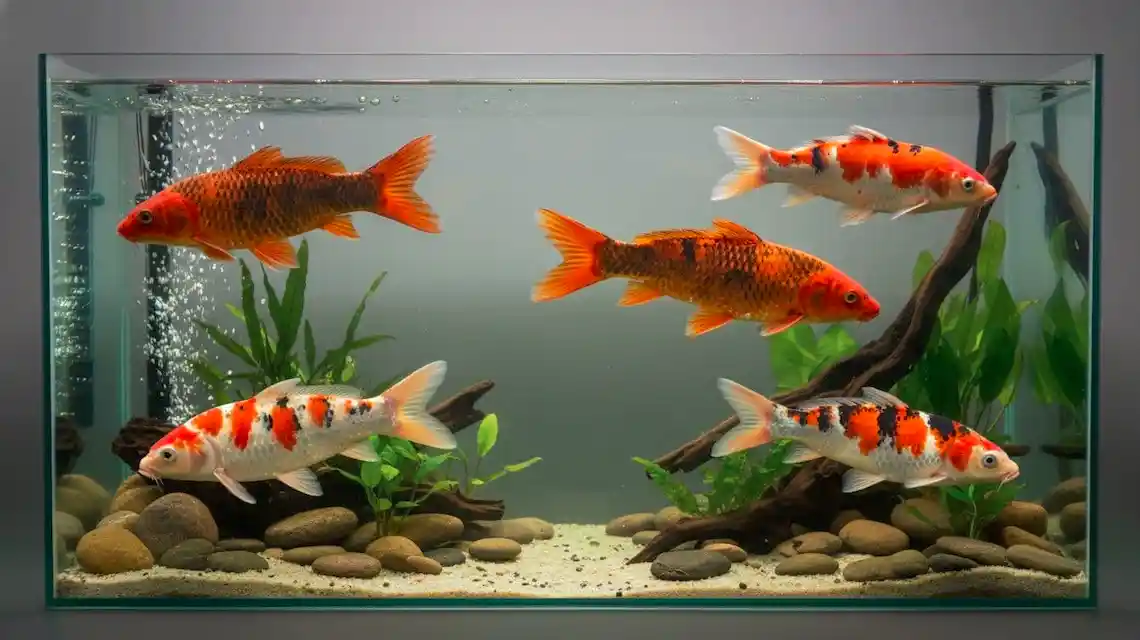

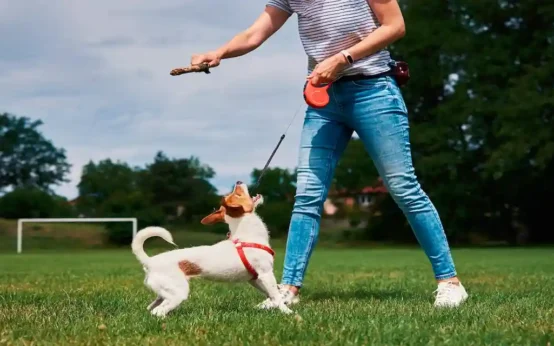 Dog Trick Training for Beginners
Dog Trick Training for Beginners 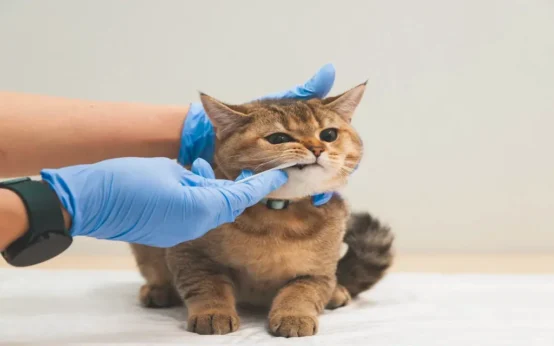 Gingivitis Cats Symptoms Every Pet Parent Should Know
Gingivitis Cats Symptoms Every Pet Parent Should Know  How to Make Dog Cookies at Home
How to Make Dog Cookies at Home  Wet Food or Dry Food for Cats?
Wet Food or Dry Food for Cats? 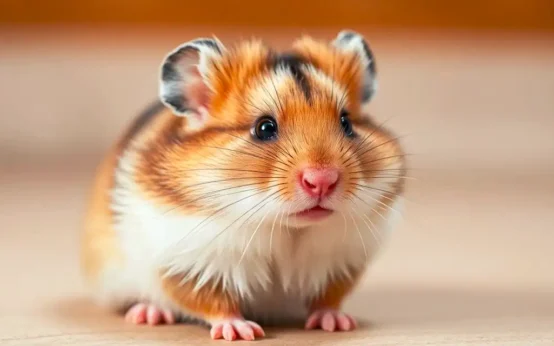 What Is the Healthiest Hamster Breed for Your Home?
What Is the Healthiest Hamster Breed for Your Home? 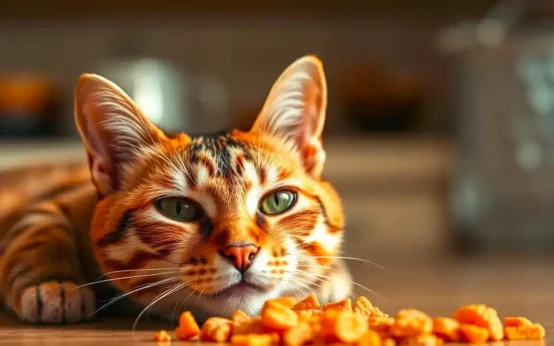 Cat Food Intolerance Symptoms: How To Spot Them Early
Cat Food Intolerance Symptoms: How To Spot Them Early